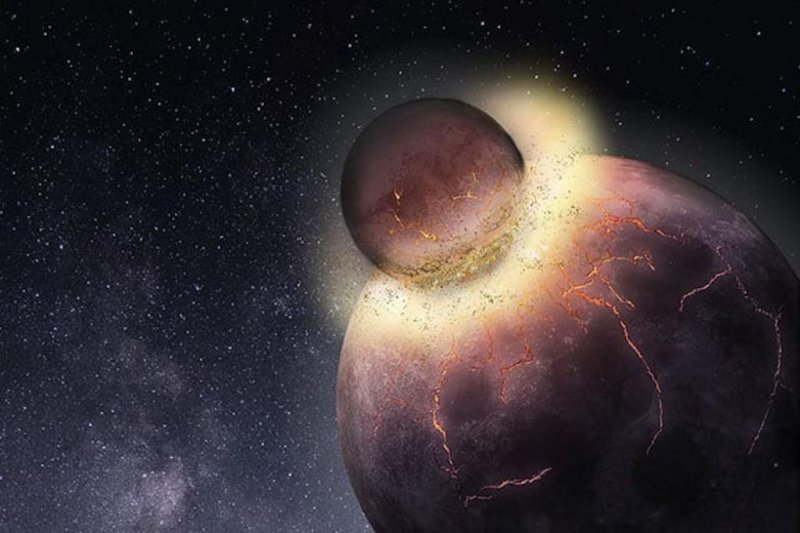New research suggests an ancient planetary collision could have both forged Earth's moon and delivered the volatiles -- including carbon and nitrogen -- that made life possible. Photo by Rice University
Jan. 24 (UPI) -- Though rare on other planets, volatiles -- easily vaporized organic compounds -- are abundant on Earth. But the third planet from the sun wasn't always flush with nitrogen, water, carbon dioxide, ammonia, hydrogen, methane and sulfur dioxide, the chemicals that made life possible.
According to a new study, it's possible the building blocks for life on Earth were delivered by a violent planetary collision, the same mashup that produced the moon some 4.5 billion years ago.
"From the study of primitive meteorites, scientists have long known that Earth and other rocky planets in the inner solar system are volatile-depleted," Rice University researcher Rajdeep Dasgupta said in a news release. "But the timing and mechanism of volatile delivery has been hotly debated. Ours is the first scenario that can explain the timing and delivery in a way that is consistent with all of the geochemical evidence."
Scientists have long theorized that Earth's volatiles were brought by a barrage of meteorites from the far reaches of the solar system, called carbonaceous chondrites. Researchers have measured elevated levels of volatiles in the remnants of ancient meteorites.
But Earth's non-core materials boast a carbon-nitrogen ratio roughly 20 times greater than the ratios found in carbonaceous chondrites.
To test whether a single collision with another planetary body could explain Earth's volatiles, scientists retreated to the lab. Through a series of experiments, researchers simulated the formation of a planet with greater concentrations of carbon and nitrogen -- a planet that might explain Earth's abundance of volatiles.
The experiments showed the formation of a sulfur-rich planetary core inside the hypothetical donor planet would have ensured more carbon and nitrogen was retained by the planet's non-core material.
Using data from their lab experiments, the researchers designed a computer model to test whether an ancient collision with a planet with a sulfur-rich core and a carbon-rich mantle and crust -- the planet's bulk silicate -- could explain the formation of the moon. The simulation considered millions of scenarios, helping scientists ensure such a collision was in agreement with the geochemistry of the early solar system.
"What we found is that all the evidence -- isotopic signatures, the carbon-nitrogen ratio and the overall amounts of carbon, nitrogen and sulfur in the bulk silicate Earth -- are consistent with a moon-forming impact involving a volatile-bearing, Mars-sized planet with a sulfur-rich core," said graduate student Damanveer Grewal.
Though it's likely carbonaceous chondrites contributed to Earth's supply of volatiles, the latest research, published this week in the journal Science Advances, suggests an ancient planetary collision offers the best explanation for Earth's carbon, nitrogen and sulphur ratios.















